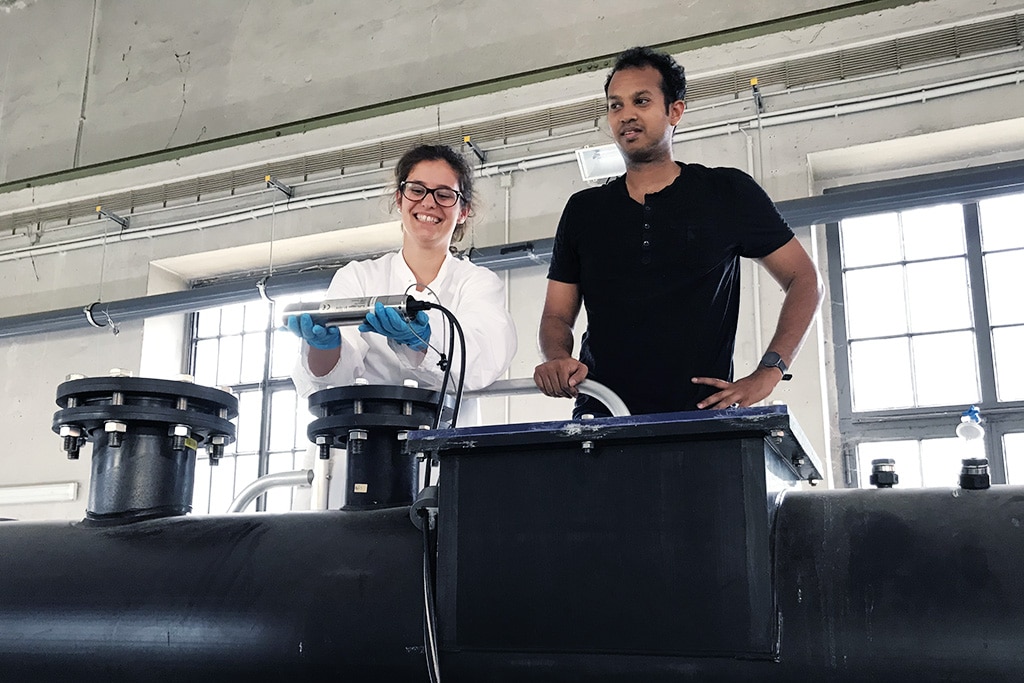New research project with Berliner Wasserbetriebe & TU Berlin
Unisense is excited to announce that the SulfiLoggerTM H2S sensor is featured in a new research project in Berlin, Germany comparing novel sensor technologies for direct, online monitoring of dissolved sulfide in wastewater collection networks.

(L – R) Micaela Pacheco & Daneish Despot from the Department of Urban Water Management at TU Berlin with the SulfiLogger™ sensor at the Berliner Wasserbetriebe sewer pilot plant.
Throughout the coming months, a SulfiLoggerTM sensor will be put through a series of elaborate tests at the Berliner Wasserbetriebe sewer pilot plant to investigate the sensor’s ability to measure fluctuations in sulfide in wastewater when exposed to various chemicals typically used for sulfide removal. Following these tests, the sensor data will subsequently be evaluated using industry-standard laboratory analysis of grab samples. The aim of the project is to identify the best sensor solution for online sulfide monitoring, enabling Berliner Wasserbetriebe to optimize the lifespan of the company’s extensive sewer network and initiate strategies to prevent the occurrence of foul-smelling odors in the streets of Berlin.
The project is carried out in the framework of the Research Training Group Urban Water Interfaces (UWI)*, which is a joint cooperative between the Leibniz Institute for Freshwater Ecology and Inland Fisheries (IGB) and TU Berlin, The Technical University of Berlin. Berliner Wasserbetriebe, the largest water utility company in Germany, is an associated partner of UWI and supports the project by providing, among other things, a unique sewer pilot plant. Acknowledging the importance of online sulfide monitoring for establishing effective asset management and odor control strategies, Berliner Wasserbetriebe participates in the research project to pursue the company’s vision of using the latest intelligent water monitoring technologies.
* UWI is funded by the Deutsche Forschungsgemeinschaft (DFG), a German research funding organization
